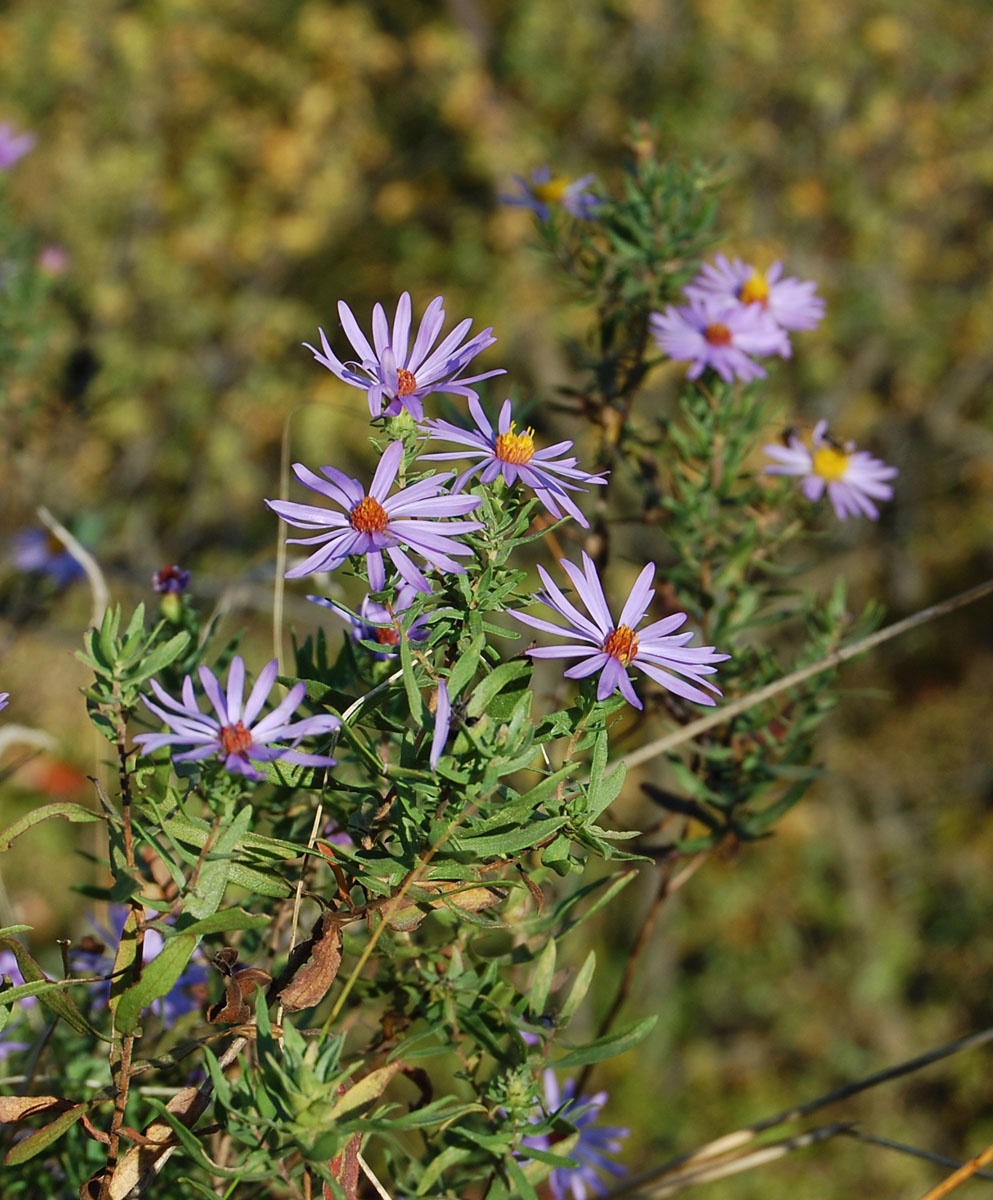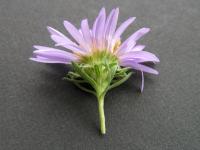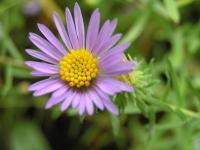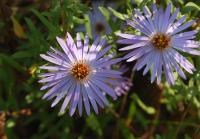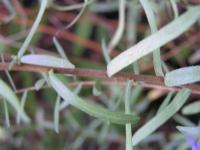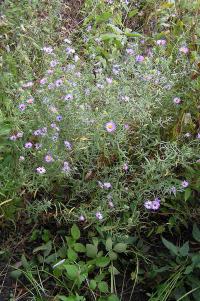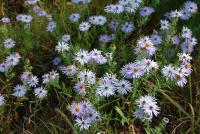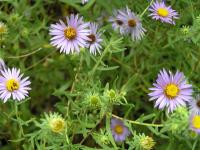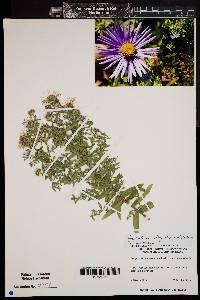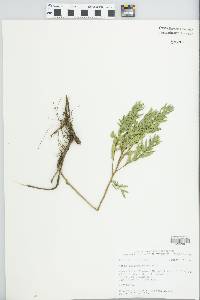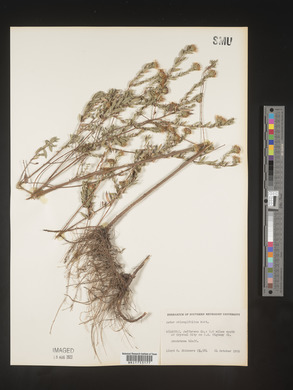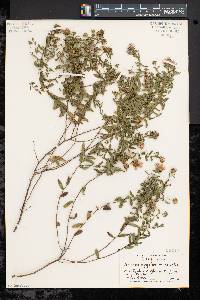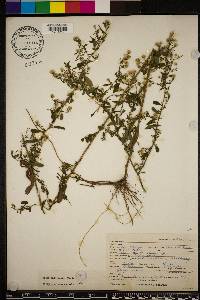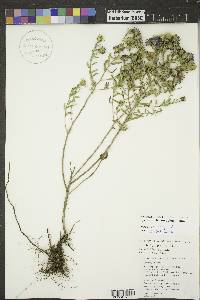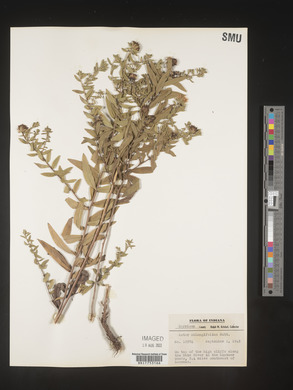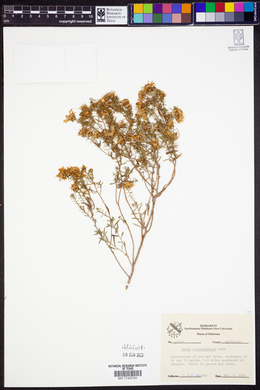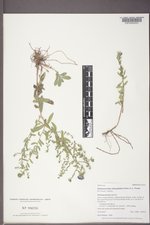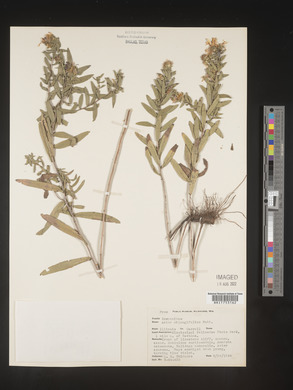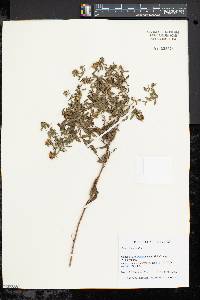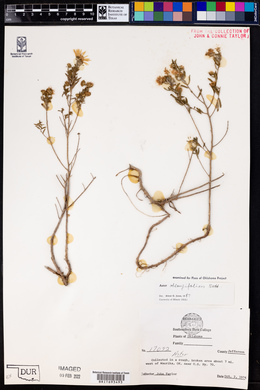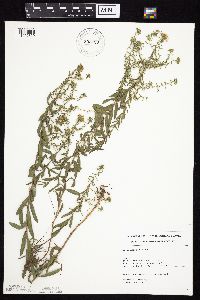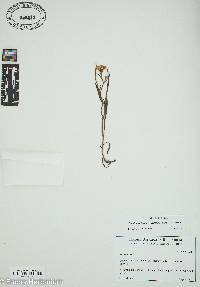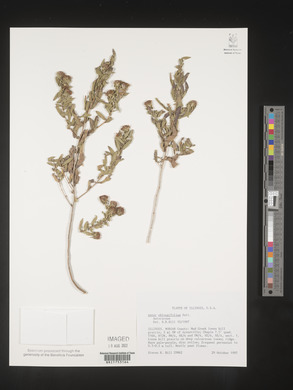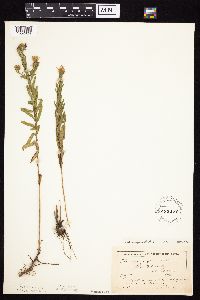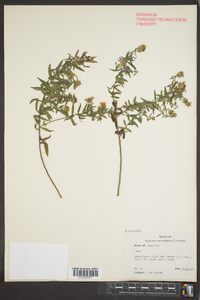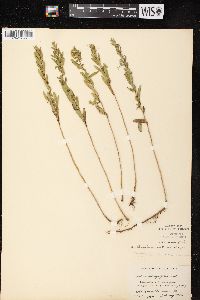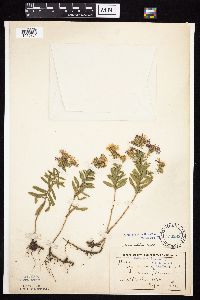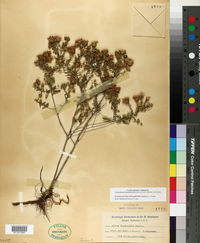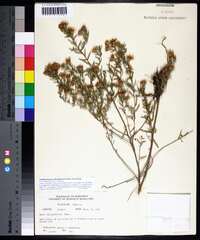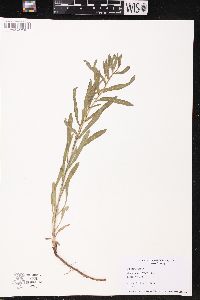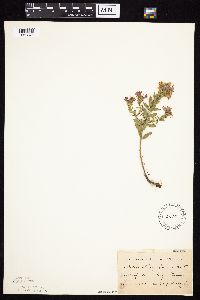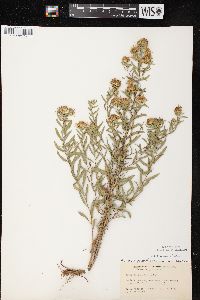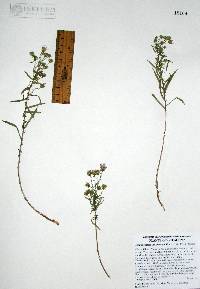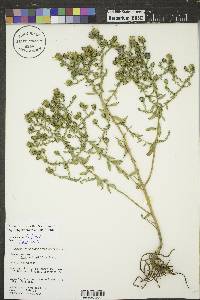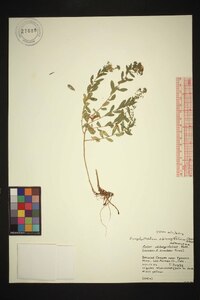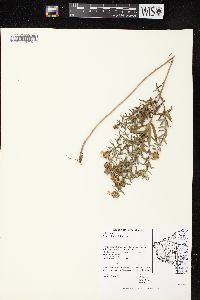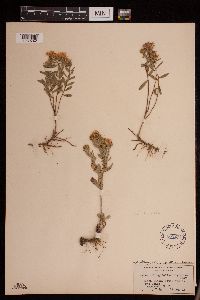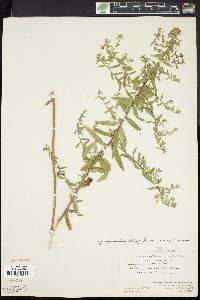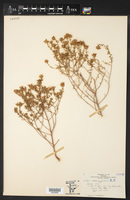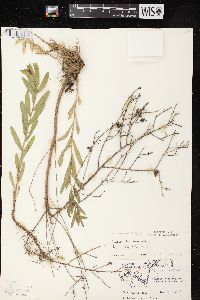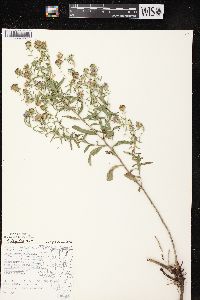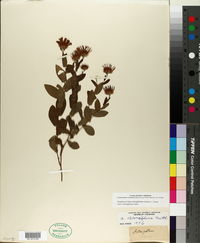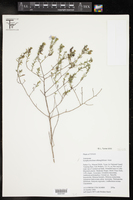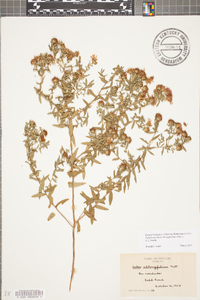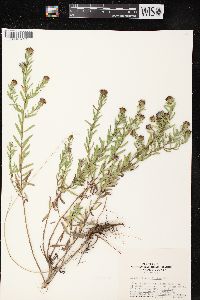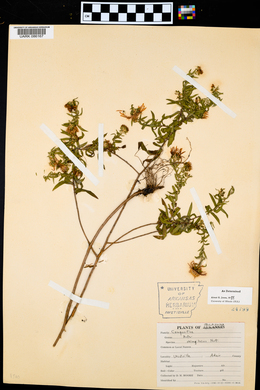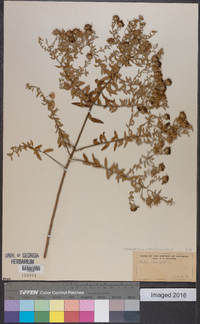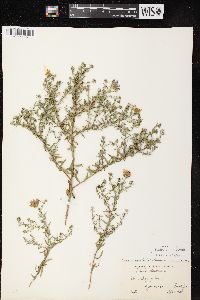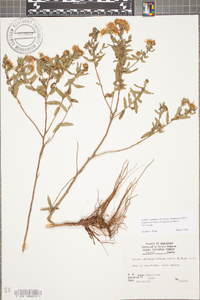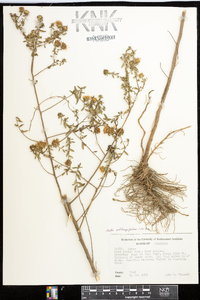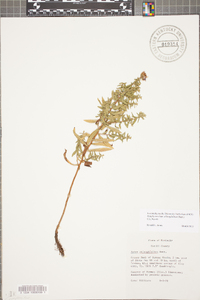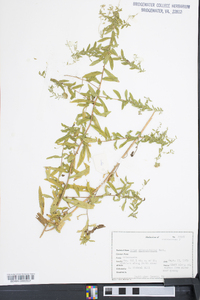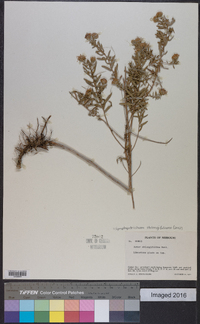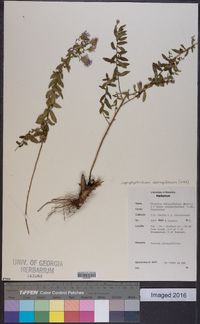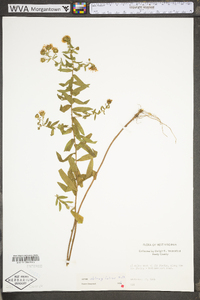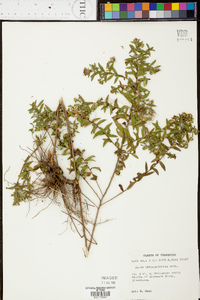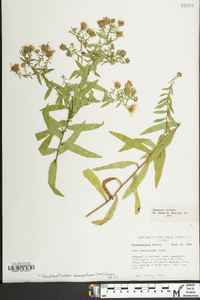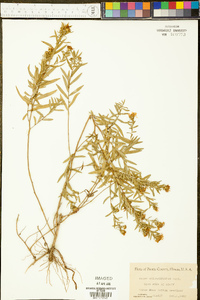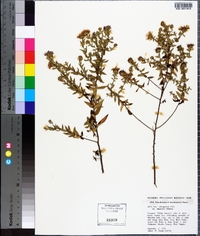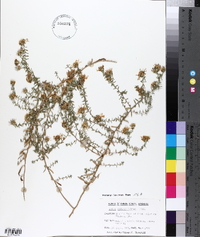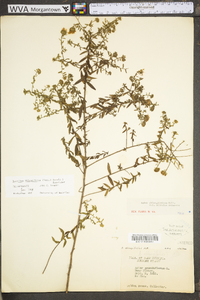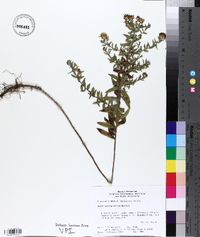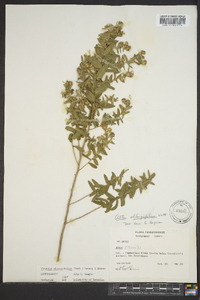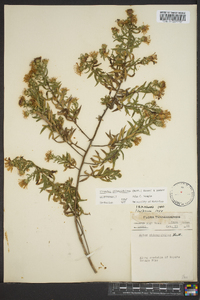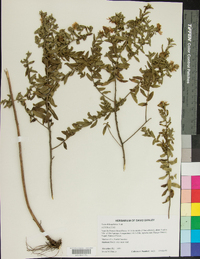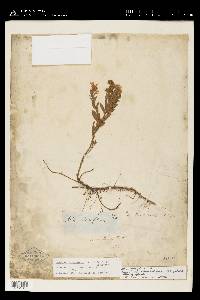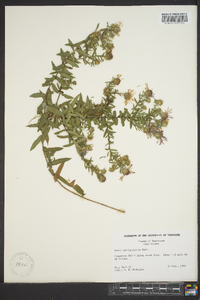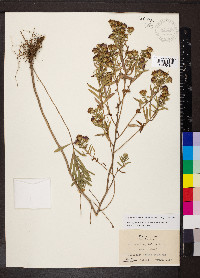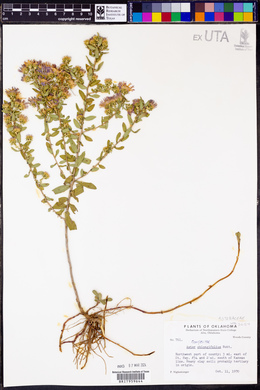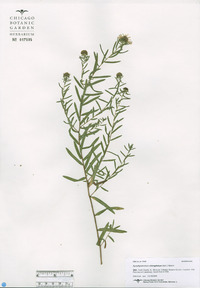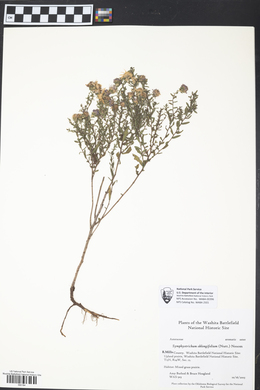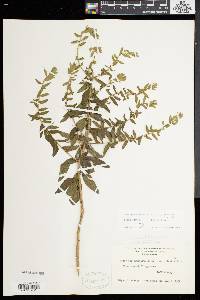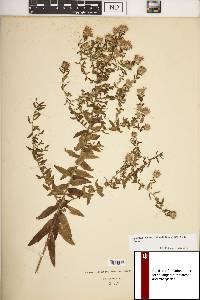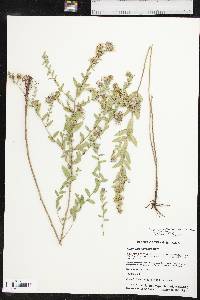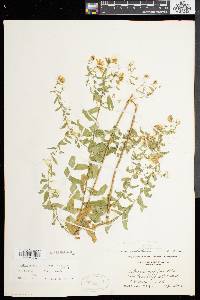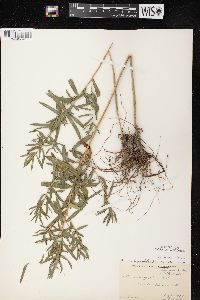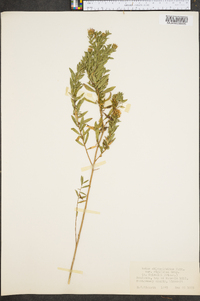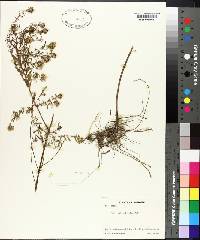Symphyotrichum oblongifolium
|
|
|
|
Family: Asteraceae
Aromatic American-Aster, more...aromatic aster
[Aster graveolens Nutt., moreAster kumleinii , Aster kumleinii var. oliganthemos Lunell, Aster oblongifolius Nutt., Aster oblongifolius var. angustatus Shinners, Aster oblongifolius var. oblongifolius , Aster oblongifolius var. orientis Shinners, Aster oblongifolius var. rigidulus A.Gray, Lasallea oblongifolia (Nutt.) J.C.Semple & L.Brouillet, Virgulus oblongifolius (Nutt.) J.L.Reveal & C.S.Keener] |
Perennials, 10-80(-100) cm, colonial; with thick, woody, short-branched caudices, sometimes ± cormoid, and thin, woody rhizomes. Stems 1-10+, ascending to erect or decumbent, light to dark brown, proximally glabrous, distally hispiduloso-hirsute or hirtellous, stipitate-glandular. Leaves (yellowish to dark green) thin, margins entire; basal sometimes persistent, sessile, blades (3-nerved) oblanceolate to spatulate, 20-50(-70) × 5-15 mm, margins entire (remotely serrate), coarsely ciliate, apices rounded, short-mucronate, faces usually hirsute, rarely glabrous, often also stipitate-glandular; proximal cauline sessile (often with clusters of smaller leaves in axils), blades oblong or linear-lanceolate, (15-)30-100 × 5-15(-20) mm, bases rounded or slightly clasping, margins scabrellous, apices acute to obtuse, spinulose-mucronate, abaxial faces scabrous, often stipitate-glandular, adaxial hirsute; distal sessile, blades lanceolate to oblong, 20-80 × 2-10(-20) mm, greatly reduced distally, bases cuneate to subclasping, margins ciliate, stipitate-glandular, apices acute to obtuse, white-mucronate, faces moderately strigose, moderately to densely stipitate-glandular. Heads in ample, corymbiform to diffusely paniculiform arrays, branches initially patent, then ascending (often from proximal nodes). Peduncles 0.5-5 cm, hispid, stipitate-glandular, bracts dense, spreading or squarrose (rarely ascending), linear to narrowly oblong, 3-8 mm, grading into phyllaries, spinulose, short-strigose. Involucres campanulate, (5-)7-9 mm. Phyllaries in 4-5(-6) series, outer oblanceolate, mid linear-lanceolate, inner linear, usually unequal, sometimes subequal, bases ± indurate, margins hyaline, scarious, erose, ciliate or ciliolate and/or stipitate-glandular, green zones often broadly foliaceous (outer), green in distal 1 / 3 - 1 / 2 (mid), apices spreading to reflexed (outer), acute, mid long-acuminate, faces moderately hairy, stipitate-glandular. Ray florets (10-)25-35; corollas light to dark rose-purple, lavender to deep purple, laminae 9-13(-15) × 1-2 mm. Disc florets (25-)30-40(-50); corollas yellow turning brown or reddish purple, 4.5-5.5(-6) mm, tubes 1 / 2 the funnelform to nearly tubular throats, lobes triangular, 0.4-0.7 mm. Cypselae dull purple or brown (nerves stramineous), obovoid, slightly falcate, not compressed, 2-2.5 mm, 7-10-nerved, faces sparsely strigillo Flowering Aug-Nov. Open, dry, rocky, sandy, gravelly, or shaly soils, limestone glades and outcrops, sandstone or calcareous cliffs, open-wooded bluffs, prairies, pastures, dunes, roadsides; 100-1500+ m; Ala., Ark., Colo., Ill., Ind., Iowa, Kans., Ky., Md., Minn., Miss., Mo., Mont., Nebr., N.Mex., N.C., N.Dak., Ohio, Okla., Pa., S.Dak., Tenn., Tex., Va., W.Va., Wis., Wyo.; Mexico (Coahuila). Symphyotrichum oblongifolium varies greatly in leaf size and shape, the extremes of which have been the bases for varieties that are not distinct but merely represent the ends of a continuum of variation. The species is similar to S. ×amethystinum (S. ericoides × S. novae-angliae), but the latter has more hairy stems and leaves, and eglandular phyllaries. A leafy cultivar of the species is offered in the horticulture trade. A form with pink rays, merely a population variation, has been recognized as distinct from the more purple typical form: Aster oblongifolius forma roseoligulatus Shinners. Symphyotrichum batesii (Rydberg) G. L. Nesom (syn. Aster batesii Rydberg), reported from Nebraska, is the intersectional hybrid of this species with S. ericoides var. ericoides.
Plants rhizomatous, sometimes also with a short caudex; stem 1-10 dm, rigid, brittle, usually ±branched, glandular upward, commonly also ±hairy or scabrous; lvs firm, entire, sessile and obscurely to evidently auriculate-clasping, narrowly to broadly oblong or lance- oblong, to 8 נ2 cm, scabrous or short-hirsute, or sometimes glabrous except the margins, the lower soon deciduous, those of the branches numerous and reduced, becoming mere spreading bracts; heads several or many, terminating the branches; invol densely glandular, 5-8 mm, its bracts in several series but not much imbricate, firm, with chartaceous base and long, green, loose or spreading, acute or acuminate tip; rays 15-40, blue or purple (rose), 1-1.5 cm; achenes strigose or finely sericeous; 2n=10, 20. Dry, usually open places; Pa. and DC., s. in the mts. to N.C. and n. Ala., w. to N.D., Wyo., and N.M. (A. kumlienii) Gleason, Henry A. & Cronquist, Arthur J. 1991. Manual of vascular plants of northeastern United States and adjacent Canada. lxxv + 910 pp. ©The New York Botanical Garden. All rights reserved. Used by permission. From Flora of Indiana (1940) by Charles C. Deam Found on high, wooded bluffs of the Ohio River. A report from Clark County is, no doubt, correct. It has also been reported from Noble and Wayne Counties but these reports doubtless are based upon wrong determinations. The report from Tippecanoe County should be referred to the variety. I found [variety rigidulus, which has upwardly appressed pubescence on the stem,] on the high, gravelly slope of the flood plain of Big Wea Creek about 4 miles southwest of Lafayette. Associated with it were other western plants such as Muhlenbergia cuspidata, Linum sulcatum, Lithospermum incisum, and Houstonia angustifolia. No doubt the Tippecanoe County report for the species was made from a specimen collected in this vicinity and should be referred to this variety. …… Indiana Coefficient of Conservatism: C = 9 Wetland Indicator Status: N/A |
|
|
|

